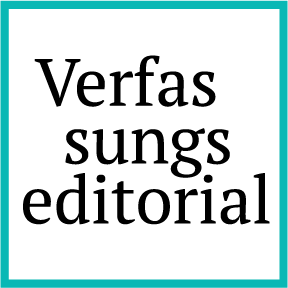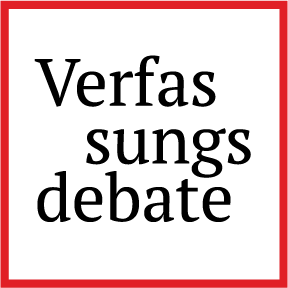The Executive’s Responsibility for the Constitution
“Stewardship”, the Plural Executive, and the Fragility of Institutions
Who is responsible for safeguarding the constitution? Traditionally, constitutional lawyers have focused on the courts (and to a lesser extent, the legislature). But the alarming actions of Trump 2.0 and democratic backsliding across the world suggests we should think far more about the role of the executive. After all, it is the executive which confronts and responds to constitutional issues on a daily basis. One might say in practice how the executive thinks and acts is the constitution.
With impeccable timing, the UK House of Lords Constitution Committee (“the Committee”) has recently published a report on Executive oversight and responsibility for the UK constitution. The aim of the report is to “consider the role of the executive in the stewardship of the constitution” – “stewardship” here meaning “safeguarding of the key principles of our constitution …. [and] oversight of the constitution as a whole…” (para 8).
The Committee faced two problems. First, in the UK, the executive is plural – there are many potential executive guardians of the constitution. That creates issues of coherence. The Committee’s answer to this is to say that the Prime Minister (PM) has an overarching responsibility for safeguarding the constitution. But that is the second problem: the PM is also a potential threat to the constitution. The Committee’s answer to that is to surround the PM with institutions, and in particular the civil service. But that presumes a civil service with the will, capacity, and legitimacy to push back; and one that has not been subject to erosion. This may be wishful thinking.
Who safeguards the constitution?
The report is a useful but problematic mapping exercise. It identifies a number of executive actors perceived to be “guardians” of the constitution. It lists the PM; the Cabinet Secretary (the most senior civil servant) and the civil service; and a surprising number of government ministers. This latter group includes not just those with legal remits, such as the Law Officers (the Attorney General, the Advocate General etc) and the Lord Chancellor; but also the Chancellor of the Duchy of Lancaster (who usually sits in the Cabinet Office, the key coordinating department of the UK executive), the Leaders of the two Houses of Parliament, the Secretary of State for Housing, Communities and Local Government, and the territorial Secretaries of State (for Scotland, Wales and Northern Ireland).
It is not a pretty picture. Robert Hazell (UCL) summed it up: “In Whitehall, the practice is likely to be that there are lots of individual guardians of different bits of the constitution, rather than a single overall guardian.” But the pluralism of the executive creates a problem. Who can pull all the strings together? Witnesses agreed: By default, it was the PM. It is a classic characteristic of the UK executive, but also the UK constitution more generally: a ramshackle patchwork of fragmented parts built up over time, coupled with the need for something to unite them. In UK legal theory, this unifying force is parliamentary sovereignty; practically, within the executive, it is the PM.
Personality, capacity and a lack of coherence
Various questions arise from the report but are not entirely answered. Do executive actors themselves think they are guardians or stewards of the constitution? The report’s language sometimes shifts to the passive or the subjunctive. For instance, the PM “bears the fundamental responsibility” (para 12) for safeguarding the constitution, but this does not tell us anything about what actual officeholders think. The report acknowledges the problem of “personality”: that different officeholders will prioritise their duties differently – and in some cases, ignore them entirely. Boris Johnson is mentioned more than once – for instance, on his 2019 attempt to prorogue Parliament and initial hesitance to comply with the European Union (Withdrawal) (No 2) Act 2019.
Even if the actors mentioned had some responsibility for oversight of the constitution, do they have the capacity to do so? This is patchy. Much of the problem is structural. The way the executive is organised (fragmented, like a set of feudal baronies) makes it difficult to have oversight of constitutional issues. There is too much churn within government: ministers and officials shift far too often. For example, the Propriety and Constitution Group in the Cabinet Office, the core group of officials responsible for advising on constitutional issues, has moved around various government departments many, many times. Everyone seems time-starved or focused on the short-term. The way the decision-making process works “should mean” key ministers are informed and have the opportunity to comment on constitutional issues (para 42). Does this actually happen? Witnesses were polite: sometimes. Consideration of constitutional issues was “ad hoc” and “driven by circumstances” (para 45).
What are the actors’ views of the constitution? The Committee seems to assume that there is a coherent view shared by all actors. But this belies experience that views differ. Do executive actors have a Whitehall view of the constitution (which sees the executive as central to the constitution) or a Westminster view (which sees Parliament as central)? Or something else? For instance, Philip Rycroft, a former Permanent Secretary and head of the UK Governance Group in the Cabinet Office (and therefore, someone with sustained and intimate knowledge of how the UK civil service understands the constitution – perhaps more than anyone else) recently argued that the UK civil service
“does not have a view of the constitution that is independent of the position of the government of the day. It holds no idealised model of the functioning of the constitution.”
This sits at odds with what the Committee would like to believe. On Rycroft’s view, it is difficult for the civil service to guard the constitution if they cannot divorce its view of the constitution from that of the incumbent government.
A slippery definition of stewardship
Closely linked to this is the Committee’s slippery definition of “stewardship”. The Scottish Parliament’s definition of stewardship is: “focusing on the longer term to ensure we are leaving things better than we found them, and putting our shared interests ahead of any individual or team.” The report does not come close to this. Its language shifts: “stewardship”, “guardianship” and “oversight” are used interchangeably. These terms are not the same. Oversight suggests monitoring, but not necessarily doing anything; stewardship and guardianship imply a more active role in protecting the constitution. Which is it? The report also notes that “constitutional policy [is] ‘treated like any other area of policy’ with no specific elevated status” (para 27). This is not what constitutional lawyers want to hear; but perhaps this is what they need to hear: Constitutional considerations are not necessarily a priority within the executive.
So the report is a useful mapping exercise, but it presumes key executive actors are “guardians” of the constitution without adequately answering three separate empirical questions: 1. Do the actors themselves think they are? (some might) 2. Do they have the capacity to protect or guard the constitution? (pretty patchy) 3. What are their views of the constitution? (quite unknown)
The Prime Minister as both promise and threat
How can we ensure the constitution as we currently understand it is sustained? The Committee makes various recommendations, some of which seem quaint – such as creating a minister to advise the PM on safeguarding the constitution (another minister!). Other recommendations are sensible indeed. Permanently lodging the Propriety and Constitution Group at the centre of government sounds pedestrian, but building capacity and strengthening institutional memory on constitutional issues within government is vital. And as Paolo Sandro notes, the recommendation of getting officials to record constitutional considerations in the form used for “write-rounds” – where decisions by Cabinet and its committees are made in writing between ministers – may encourage the embedding of constitutional norms into everyday practice.
Two separate points emerge from the report. The first is that the pluralism of the executive means no one appears entirely in charge. Thus, the constitution muddles on, in an ad hoc manner with no one being accountable for what happens. Of course, there is the PM – but that is a promise and a threat. Yes, the PM can pull things together and ensure that appropriate thought is given to constitutional considerations. But the PM is also potentially a force who could undermine the constitution (as Peter Hennessy and Andrew Blick suggest in their recent book, Could it happen here? reviewed by Mark Elliott here). How to constrain the PM in a system where so much relies on self-restraint?
The fragility of institutional safeguards
The Committee’s answer is to surround the PM with institutional safeguards – in particular, it places heavy emphasis on the civil service. That is one solution. But here is the second point: Institutions like the civil service can decay. They can hardly serve as safeguards when their capacity to do so has been eroded from within. We have already noted the problem of churn within government: Institutional memory can be lost. The Committee also notes that a recent job description of the Cabinet Secretary made no reference to the office’s constitutional responsibilities, suggesting that aspect has been downgraded over time.
If we want institutions to act as stewards, then we are going to have to defend them from this erosion. As Andrew Sabl has said, institutions are like the Golden Gate Bridge: a remarkable achievement, but free from rust only if crews are constantly repainting it. They “require continual work and reinforcement to remind people they can be at once deeply frustrating and constantly necessary.” The Committee acknowledges that part of this work involves building up pedestrian practices so that constitutional norms become internalised within the executive. But another part of this refurbishment should be recognising that using overblown rhetoric like “the deep state” and “bloat” to refer to the civil service has a cost. Running down institutions may get media attention and even public support in the short term, but we should not take the future legitimacy of institutions for granted. Erosion can be visible and invisible. Like coastlines, institutions which suddenly collapse are often the product of years-long erosion.
The Constitution Committee has understood the test of a constitution’s resilience may come more quickly than we would wish (and it has now launched a second inquiry on the state of the rule of the law in the UK). Best we prepare now.



